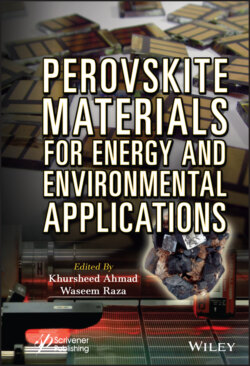Читать книгу Perovskite Materials for Energy and Environmental Applications - Группа авторов - Страница 17
Donors and acceptors
ОглавлениеThe number of holes and electrons in their bands respectively and therefore the conductivity of the semiconductor, may be regulated by adding different dopants or different types of impurities called acceptors and donors. The doped semiconductor, known as extrinsic material.
A semiconductor has four kinds of charged species: holes, electrons, donor ions which are positive Nd, and acceptor ions which are negative Na. Generally, there is no net charge in all samples.
The densities of the negative and positive particles should be equal in order to maintain the charge neutrality:
(1.19)
For n and p we can solve equations 1.19 and 1.13:
(1.20a)
(1.20b)
The equations 1.20a and 1.20b are seldom used. Alternatively, either of the following cases is mostly valid:
1 Nd – Na ≫ ni (i.e., N-type material),(1.21)(1.22)If additionally, Nd ≫ Na, then(1.23)The Fermi energy can then be written as:(1.24)
2 Na – Nd ≫ ni (i.e., P-type material)(1.25)(1.26)If furthermore, Na ≫ Nd, then(1.27)The Fermi energy can then be written as:(1.28)
